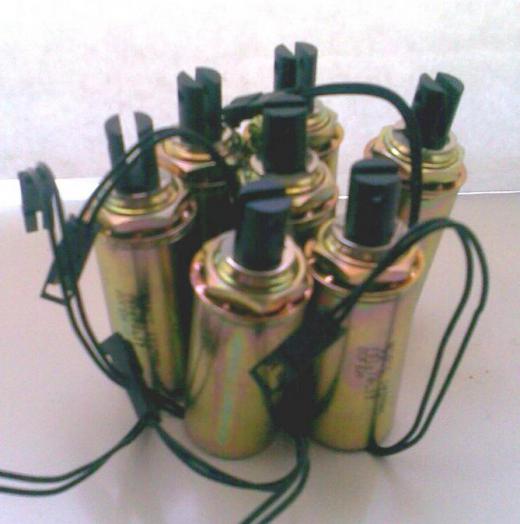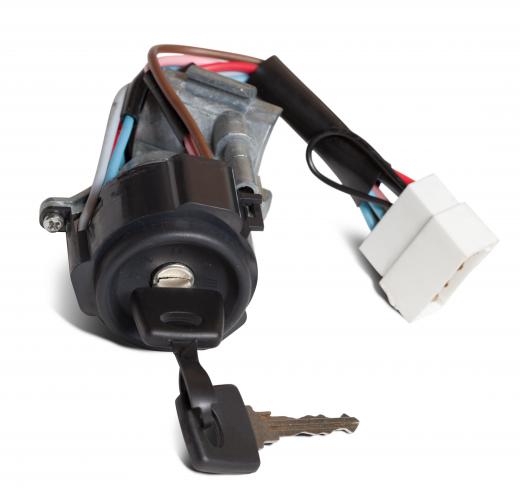A solenoid switch is a device that uses a small amount of power to create a magnetic field which will then create a connection with a much larger power source. Generally, these devices are contained in a cylindrical metal housing that covers a metal coil, metal rod and four or more electrical connectors. These switches are extremely common within automobiles and devices with similar engines. In a car, a solenoid switch will take the connection created when the key is turned and use it to connect the larger and more powerful car battery to the car’s electrical system.
Most solenoid switches share a basic design. A metal coil is used to create a stable and predictable magnetic field when a small amount of current runs through it. This essentially turns the coil into a finely-tuned electro magnet. Generally, a pair of connectors are hooked to either end of the coil, which are connected to a low power source.

Inside the coil, the solenoid switch has a magnetic metal rod that is held securely but loose enough to slide back and forth within the coil. When the coil is powered, the magnetic field drives the rod all the way to one end of the coil. This is where the second set of connectors is located. When the rod is in place, it makes a circuit with the heavier connections and lets power flow through the system. This whole thing is then enclosed in a metal housing to reduce corrosion and to protect the system and its operators.

While it is possible to find a solenoid switch in a number of items, it is by far the most common in the starter system of modern automobiles. These systems generally use the same basic switch design. The circuit created by the ignition system when the key is turned is connected to the coils. This charges the coils and makes a heavy connection with the car battery. The power from the battery provides the electricity to start the car.

These switches are very predictable and reliable, which is why they are used so heavily. Since the solenoid switch doesn’t contain any true electrical or mechanical parts, it is really hard for the system to break down. As long as the outer casing remains intact, the inner workings will stay dry and continue to operate for a very long time. Generally, the most common reason for a solenoid switch to break down is corrosion on the connectors that migrate from outside in.
